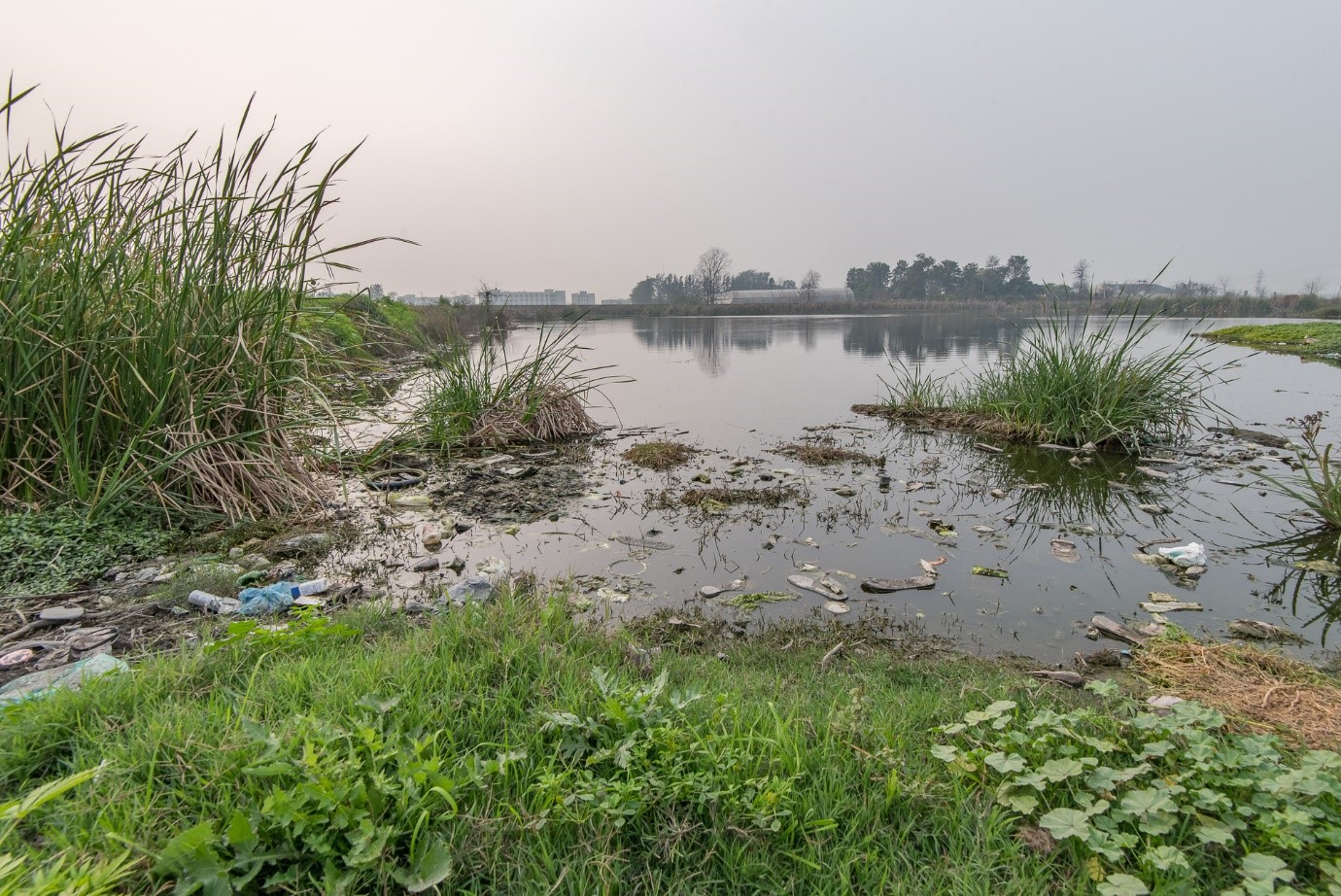Submitted by Sarah Bailey on Wed, 04/03/2020 - 10:41
Amidst the ongoing debate about mismatched demand and supply of water for farm use, alongside escalating cost of irrigation in rural Punjab, disused village ponds – and surface water in general – are now being promoted as a cost-effective incremental water source. Here, Dr Shruti Bhogal from Flagship Project 4, based at the Centres for International Projects Trust, New Delhi, discusses the importance of reviving these ponds as a sustainable water source for the future.
Historically, village ponds, once heavily scattered across Punjab, played an important role in sustaining rural society. Sadly, contemporary geographical maps show that their numbers are now dwindling. In the absence of these natural reservoirs, alongside inadequate social infrastructure in rural Punjab, rainwater stands little chance of being harvested for productive use.
Why revive village ponds?
Reviving village ponds would be beneficial for various reasons. As well as being a potential additional source of irrigation for resource-poor farmers, village ponds can also facilitate recharge of ground water, be a haven for birds and other fauna and flora, serve as an additional source of rural income, and add to the beauty of the rural landscape.
There is also literature evidencing the value of village ponds as a source of nutrients. The introduction of duckweed – eco-friendly technology for treating water contamination – has the potential to add further nutrients.
Beside research evidence, local historical narratives also point towards the potential of village ponds. Older generations of farmers have an abundance of anecdotes regarding the important role that ponds once played in daily rural household life. They were revered as abetters of capricious monsoons, enablers of natural rainwater harvesting, and a source of water for recreational use by humans and animals.
Challenges
In reality, village ponds are now – unfortunately – commonly referred to as sewers. The magnitude of contamination in these water sources in Punjab has been extensively documented.
The rural population has diverse expectations from these surface water bodies, depending on their socio-economic status. Large-scale farms are unwilling to utilize village pond water for irrigation owing to its current state of contamination. Many are reluctant to consider the idea even if they are assured of access to clean pond water in the future. Some farmers feel that efforts towards promotion of pond water utilization would not pay off unless pollution is controlled.
Measures for revival
To change the fortunes of village ponds, government investment in developing rural social infrastructure is of utmost importance. Sewage management, pucca (cemented) and covered channels for channelling excessive rain water to ponds, as well as adequate garbage disposal are all crucial. To ensure the sustainability of this source of surface water, continuous de-sludging and cleaning of ponds is imperative. This would again require government backing.
Consistent support from government administration and agriculture extension services to collaborate with farmers is also a pre-requisite towards pioneering endeavours in the rural economy. There are farmer-turned-entrepreneurs who farm fish in private ponds, which points towards an alternative use for these bountiful public water bodies with the potential to create an alternative livelihood source in the rural economy.
Unfortunately, as this dialogue has played out, some ponds have been illegally dried out, creating further impediments to their restoration. It is clear that more needs to be done.
Revitalizing natural water sources: an answer to rising water crisis
Increasing groundwater depletion and other vulnerabilities in agriculture are the result of exploitative farm practices. To solve the rising water crisis, all water sources must now be considered. The need of the hour is to restore faith in sustainable approaches to water management.
If we are able to establish and accomplish goals towards revitalizing natural water sources – reviving polluted and dusty village ponds being a major opportunity – it will be one big step towards promoting sustainability in rural society. Important lessons in this regard are there to be learnt from history.
Our research in Flagship Project 4, combining archaeology with socio-economics, is beginning to seed the changes needed. A recent stakeholder consultation on reviving village ponds in Ludhiana in February 2020 brought experts and stakeholders together to discuss the steps that can be taken to increase availability of surface water for irrigation by reviving village ponds. Such a dialogue is an important part of renewing local interest in reviving village ponds and setting the policy agenda for it. As TIGR2ESS continues, we will continue to work with these objectives in mind.

